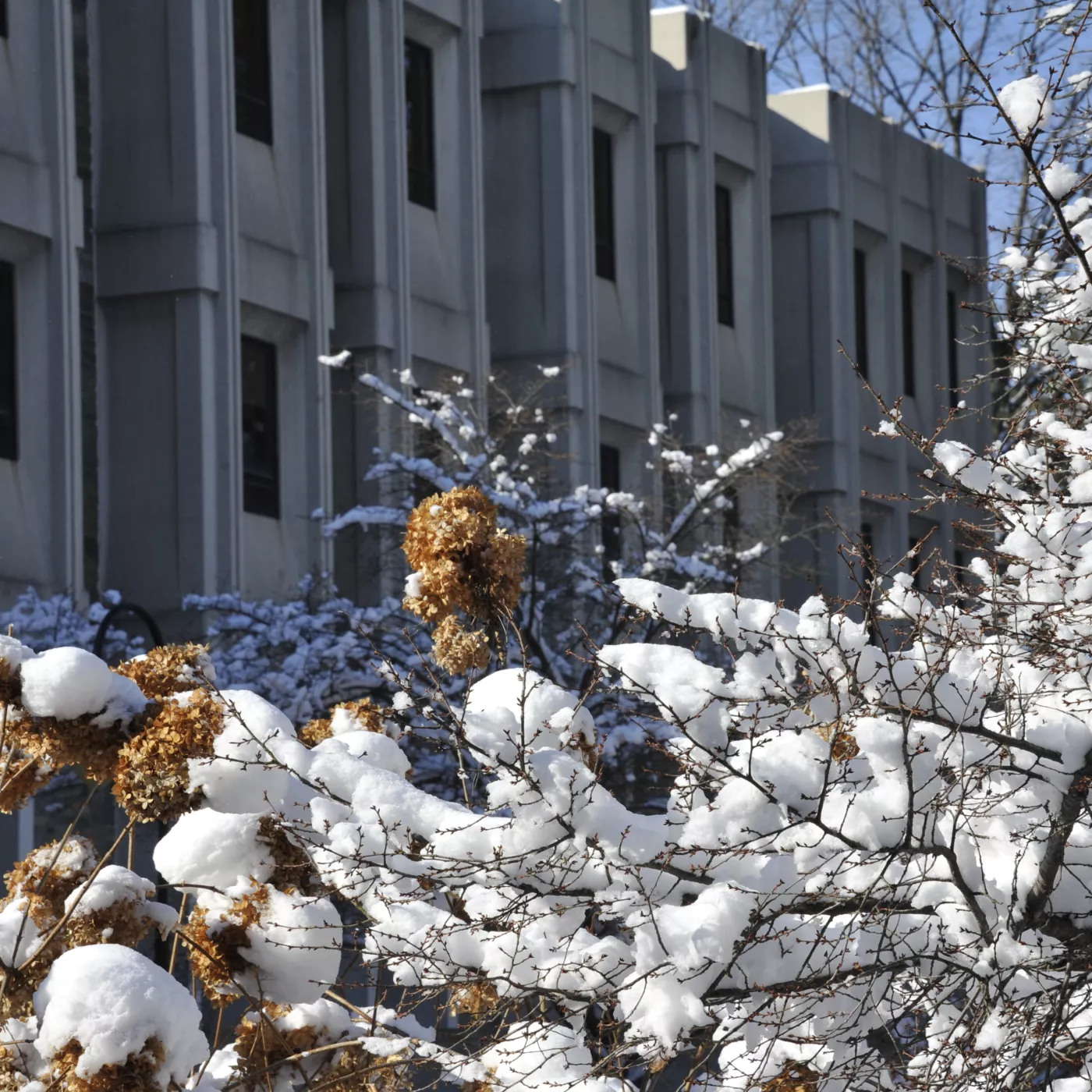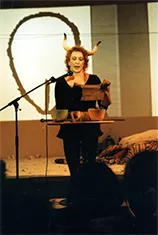Carolee Schneemann at Bryn Mawr: Video Sculptures, Photographs, Manuscripts, and a Performative Lecture
September 30 – December 12, 2014
Open 11 am to 4:30 pm Monday through Friday
Canaday Library Class of 1912 Rare Book Room Gallery
Read the Philadelphia Inquirer's review of the show.
Opening Events
Tuesday, September 30, 7:00-8:00 pm, Canaday Library Gallery
The performative lecture by Carolee Schneemann originally scheduled for this evening has been postponed due to an injury sustained by the artist. The performance will take place Saturday, November 8 after the film screening and the gallery talk. See November 8, below.
Public Lecture: "Between Body and Environment: Carolee Schneemann's Kinetic Theater"
Erica Levin, Cleveland Institute of Art
Wednesday, October 29, 12:30 pm, Thomas Hall Room 224
Hosted by the Center for Visual Culture, with light refreshments.
Public Lecture: "MOTORS, FURS, and SCROLLS: Technology and Animism in the work of Carolee Schneemann"
Melissa Ragona, Carnegie Mellon University
Wednesday, November 5, 12:30 pm, Thomas Hall Room 224
Hosted by the Center for Visual Culture, with light refreshments.
Film Screening/Curator Talk
Saturday, November 8
2 pm: Bryn Mawr Film Institute (Lancaster Ave., Bryn Mawr, PA)
Breaking the Frame film screening
4pm: Bryn Mawr College Canaday Library Gallery
Carolee Schneemann at Bryn Mawr exhibition curator talk
5pm: Bryn Mawr College Thomas Great Hall
Performative lecture by Carolee Schneemann and reception
Carolee Schneemann at Bryn Mawr exhibition open 11 am - 7 pm
A screening of Breaking the Frame (2012; 100 minutes)—a film on Schneemann’s life and work by Mirielle Nitoslawska—at the Bryn Mawr Film Institute, followed by a talk with exhibition curator Brian Wallace in the Canaday Library Gallery, and then the performative lecture by Carolee Schneemann, originally scheduled for Sept. 30.
About the Artist
Carolee Schneemann has worked for over fifty years as a solo artist and in collaboration with artists, performers, filmmakers, and writers. Her paintings, photographs, installations, writings, and performances address the aesthetic, political, and personal dimensions of sexuality and self through thoughtfully provocative collisions of images and ideas.
This exhibition shows an artist focusing on the contradictions and connections engendered in the cultural and the personal body she inhabits, identifies, and constantly homes in on. Venus Vectors (1987) is the centerpiece of the exhibition. This large sculptural work incorporates transparent acrylic panels displaying iconographic images of the human body and other organic forms with video monitors showing edited performances of Schneeman’s Fresh Blood: A Dream Morphology. The work glitters with reflected and generated imagery, implicating the viewer and the surrounding space into the experience of the work. Venus Vectors/Fresh Blood insists upon what the artist articulates as a vulva-centric approach to explore menstrual blood and taboos which set the female body apart.
In Vulva’s Morphia (1995), a “visual grid with text,” stacked horizontal bands of ironic text and depictions of vulvas encapsulate a sensitive young individual’s encounters with the powerful ideologies that structure language, education, self-awareness, and philosophy. “Vulva deciphers Lacan and Baudrillard and discovers she is only a sign, a signification of the void, of absence, of what is not male…” In the artist’s book Cézanne: She Was A Great Painter (1975-76) Schneemann takes as her starting point the fact thatts that in her youth she mistakenly believed that the Post-Impressionist artist was a woman named something-Anne. The lessons she drew from the process of accommodating to historical fact while maintaining psychological and creative independence range from the bitterly regretful to the luminously optimistic and address the fundamental tenets of doctrinal art history.
Fur Wheel (1962) is a void masquerading as a bowl—a vase in furs—a physically aggressive yet restrained kinetic wall work incorporating a slowly rotating fur-lined vessel-like form and other objects that, together, nod to gender-blurring surrealist strategies, and push together feminine-identified found objects and masculine pop art references, confusing the straight-up formal signals such a work might otherwise emit with a shape that is hollow but needs no complement, is round but neither requires nor permits a stabilizing hand, and is hairy/furry but not lacking for paint or other markers of seminal import.
The exhibition integrates three film/video works that utilize similar strategies and, also, highlight the artist’s disciplined use of repetition—her constant recourse to cycles of preparation, expression, presentation, adjustment, and re-presentation. Water Light/Water Needle (Lake Mah Wah, NJ) (1966), Body Collage (1967), and Mysteries of the Pussies(1998-2010) each shows the artist working alone or with others to explore and enact personal and cultural knowledge of embodiment—and to reveal the personal and cultural embodiment of knowledge.
Why Carolee Schneemann at Bryn Mawr now? Recently, investigations into the convergences of art, performance, and feminism have shifted focus from the initial experimental combinations of those disciplines in the 1950s and 1960s to the burgeoning cultural/intellectual cross-currents and doctrinal, political, and institutional/market conflicts of the 1970s and 1980s. For a variety of reasons, the artists, academics, collectors, critics, and presenters pursuing these new investigations can find it difficult to view the works they seek to reexamine. The centerpiece of this exhibition, Venus Vectors/Fresh Blood: A Dream Morphology, is a mid-career installation piece that has not been seen publicly (or published) in nearly a decade. Venus Vectors is exhibited here as a resource for—and offering to—students, scholars, artists, and other audiences, and as a fresh entry point to earlier works such as Cezanne, She Was A Great Painter and Interior Scroll and more recent works such as Vulva’s Morphia and Mysteries of the Pussies.
Supported by The Friends of Bryn Mawr College Library, The Bryn Mawr Film Institute, and, at Bryn Mawr College, the offices of the President and the Provost, the Arts, the Museum Studies Working Group, Information Services, The Center for Visual Culture, and the Department of the History of Art. Additional support from the Slought Foundation, and the Mütter Museum at the College of Physicians of Philadelphia.

Contact Us
Library and Information Technology Services
Canaday Library
101 N Merion Ave
Bryn Mawr, Pennsylvania 19010
Office of the CIO:
610-526-5271
